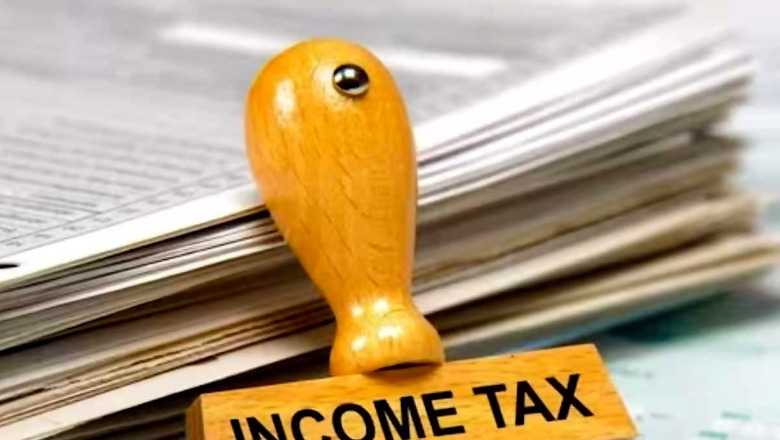
views
As India prepares for the first Union Budget of the government’s third term, there is heightened anticipation regarding potential reforms in personal taxation. This year, stakeholders are particularly focused on key areas that could impact individuals and senior citizens, as well as influence investment behaviour in capital markets and derivatives trading.
The current tax structure under the simplified tax regime features multiple brackets ranging from 5% to 30%, causing complexity and administrative burden. Authorities are expected to continue focusing on the new regime and may seek to simplify it by consolidating tax rates into broader categories.
The government is reportedly considering measures to potentially reduce personal income tax rates to bolster GDP growth by stimulating consumption, especially given the subdued spending levels among the middle class.
In the forthcoming budget, the government plans to raise the income threshold for tax liability from the current Rs 3 lakh to Rs 5 lakh. This adjustment aims to increase disposable income, particularly among lower-income groups, and applies exclusively to taxpayers under the new regime.
Tax Relief for the Middle-Class
Amit Gupta, Partner at Saraf and Partners, and Rahul Charkha, Partner at Economic Laws Practice, highlighted that every year, taxpayers compile a wish list for the government, hoping for tax relief measures such as an increase in the tax exemption limit and higher deduction amounts to ease their tax burden.
Gupta said that the legislature’s mandate is to align the tax amendments to widen the tax base and provide the requisite stimulus to the areas of prime importance for the Nation at large.
“Considering the government would be aiming to induce higher consumption levels in the economy, tax reliefs resulting in the higher post-tax take-home income for the taxpayers may be expected,” Gupta said.
Charkha also felt that there is a strong possibility of tax relief for the middle class in the upcoming budget.
“The current tax slabs, set in 2013, are outdated. Inflation has eroded purchasing power, with April 2024’s retail inflation at 4.83% [Ministry of Statistics and Programme Implementation]. The basic exemption limit has remained at Rs 2.5 lakhs since 2015,” Charkha underlined.
These could be around further rationalisation to push the new-default tax regime to garner more adoption, more presumptive taxation regimes, hiking the allowable deduction of interest on housing, education, electric car loans, etc, Gupta added.
Simplification Of Tax Regimes
Budget 2024 Expectations Tax Slab
The Budget 2023 introduced the new tax regime, making it more attractive by changing the tax slabs, introducing standard deductions, increasing the limit of rebates, and extending the regime to the association of persons and bodies of individuals.
Gupta noted that the government has been carrying out various measures aiming to simplify the tax regime including compliance processes and the same has been an ongoing process. The same would ensure deepening the tax base and raking in more taxes for the exchequer.
The simplification of the taxation regime should also help mitigate the protracted litigation on tax matters. More rationalised presumptive/composition taxation schemes with a wider ambit/threshold would encourage more taxpayer onboarding and ease the administrative burden for tax collection, Gupta said.
“The need for simplifying the tax structure still exists. Proponents argue for a simpler system with fewer deductions, while others believe deductions are crucial for specific financial goals and social needs,” Charkha noted.
Enhancing the Scope of Deductions
Gupta noted that the legislators have gradually been phasing out exemptions and/or deductions enshrined in the income tax statute for simplification and parallelly introducing more deeming anti-abuse provisions into the tax statutes.
“The boost in investment may ideally be driven through more taxpayer-centric rationalisations in the direct and indirect taxes, especially taxes on gains resulting from investments.”
Middle-Class Awaits Relief
Charkha also joined the dots on how the global economic crisis and the Russia-Ukraine war have worsened inflation and disrupted businesses, prompting many countries to revise their tax policies.
However, Charkha added that middle-class Indians have not seen any major relief.
Rising healthcare and education costs further strain household budgets. High taxes reduce consumer spending, hindering economic growth. Inflation erodes the value of existing tax breaks and deductions over time.
“Budget 2024 might consider indexing tax slabs and deductions to inflation to maintain their effectiveness and provide the much-needed relief,” Charkha said.
“Given the rising cost of living, limited discretionary income, and ongoing legal cases, there is a strong argument for revising tax slabs and providing relief to middle-class taxpayers.”
“It may be noted that the Supreme Court’s Janhit Abhiyan case upheld the 103rd Constitutional Amendment, granting 10% reservation for Economically Weaker Sections (EWS) with an annual family income below Rs 8 lakh. Despite this classification, those earning below Rs 8 lakh still pay income tax,” Charkha pointed out.
The Standard Deduction Debate
Charkha elaborated that a single, simplified system with fewer deductions would be easier for taxpayers to navigate.
However, some deductions are crucial for long-term financial planning and social needs, Charkha added.
“The middle class hopes for increased tax slabs, higher deduction limits, and lower surcharge rates. Salaried individuals wish for higher standard deductions and deductions for official expenses. Senior citizens desire increased deduction limits for health insurance and medical expenses. Working women would benefit from childcare cost deductions,” Charkha highlighted.
Tax Slabs: Way Forward
Charkha said that considering inflation’s impact on existing tax breaks, Budget 2024 might index tax slabs and deductions to inflation.
Potential reforms include revising tax slabs under both regimes, increasing the basic exemption and rebate limit, reducing the surcharge rate, and introducing a combined deduction for medical expenses, health insurance, and life insurance premiums.
Charkha also underlined that the COVID-19 pandemic highlighted the importance of health insurance leading to individuals spending more on health insurance.
“Raising the deduction limit under Section 80D, particularly for senior citizens (perhaps to Rs 75,000), would be a welcome change, promoting health security while offering tax benefits,” Charkha added.
Additionally, experts felt allowing home loan deductions under the new regime could incentivize more taxpayers to switch. By implementing these changes, the government can create a more streamlined and taxpayer-friendly tax system.
Boosting investment through tax incentives or enhancing the scope of deductions
Tax breaks play a crucial role in encouraging individuals to invest and save for the future.
Section 80C, the most commonly used deduction, allows taxpayers to invest in instruments like life insurance premiums, tuition fees, and home loan repayments.
The expenditure on life insurance premiums, tuition fees, and principal repayment of home loans has also substantially increased. With increased awareness, people are actively utilising these options, often reaching the current limit of Rs 1.5 lakh. The taxpayers have thus been eagerly waiting for an increase in this limit for several budgets, Charkha noted.
The cost of living, including inflation and rising expenses like education and housing, has significantly outpaced the increase in the Section 80C limit. To address this gap, many taxpayers are hoping for a substantial hike, ideally to Rs 3 lakh.
However, a more realistic expectation, considering past trends, might be an increase to Rs 2 lakh in the upcoming budget considering the consistency of the increase in the limit of Section 80C by Rs 50,000 after 9 years in 2014.
Beyond Section 80C, several other deductions and exemptions are available, such as those for health insurance (Section 80D), education loan interest (Section 80E), and housing loan interest (Section 80EE). Similarly, deductions exist for charitable donations (Section 80G), rent payments without HRA (Section 80GG), and savings bank interest (Sections 80TTA and 80TTB).
“Unfortunately, the limits for these haven’t been revised in recent years. The Government should take cognizance, not just of the inflation but also the Covid-19 pandemic, increase in interest rates, property rates, philanthropy and consider revising these limits,” Charkha added.

















Comments
0 comment